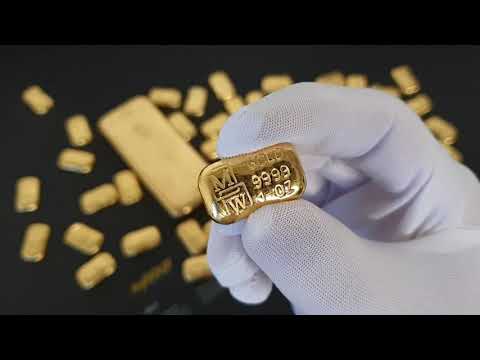Gold price recovery are showing a small recovery as geopolitical tensions rise, particularly due to recent events in Lebanon. This increase is largely driven by investors seeking safe-haven assets like gold. However, comments from Federal Reserve Chairman Jerome Powell may limit how much gold can rise. In this article, we will discuss the current gold prices, the factors affecting them, and what to expect in the future.
Rising Geopolitical Tensions Increase Demand for Gold
Gold price recovery (XAU/USD) slightly and is now trading in the $2,640 range per troy ounce on Tuesday. The Israeli army’s invasion of Lebanon has created uncertainty, leading investors to seek safety in gold. Additionally, the impact of China’s stimulus program is fading. This program had previously redirected money into property and lifted Chinese stock markets. As a result, gold is bouncing back after two days of losses.
Federal Reserve Comments May Limit Gold’s Growth
Even though gold prices are rising, they may be capped by statements from Jerome Powell. On Monday, he mentioned that the Federal Reserve cut interest rates by 50 basis points (bps) recently, but this does not mean they will continue to cut rates in the future. He emphasized that the Federal Open Market Committee (FOMC) is “not in a hurry to cut rates quickly” during his talk at the NABE conference.
Powell suggested there could be two more 25 bps cuts before the end of the year, but he made it clear that this plan is not fixed. As a result, market expectations for a 50 bps cut at the Fed’s November meeting have dropped from over 60% last week to about 30% on Tuesday, according to the CME FedWatch tool.
Strong Economic Data Reduces Rate Cut Expectations
Recent strong economic data has also lowered the chances of more significant rate cuts. The reduced likelihood of a major cut has negatively impacted gold prices. Since gold does not earn interest, lower rates usually make it more attractive to investors. Conversely, higher rates or rising interest rates can deter investment in gold.
Technical Analysis: Gold’s Correction Could Reverse Short-Term Gains

Gold has recently pulled back to the 50-period Simple Moving Average (SMA) on the 4-hour chart. This correction has led to a series of lower lows and lower highs since the all-time high on September 26. While the market currently appears balanced, more weakness could push gold down to about $2,615-$2,620. If gold falls below Monday’s low of $2,625, it would indicate further bearish trends.
Potential Support Levels for Gold
If gold falls below the trendline, it could decline to support levels near $2,600 (the high from September 18), then to $2,550 and $2,544 (the 0.382 Fibonacci retracement level from September’s rally). The Relative Strength Index (RSI) is currently neutral, suggesting that there is still room for gold to drop before it becomes oversold.
Long-Term Outlook for Gold Prices
While gold is facing short-term challenges, it remains in an overall uptrend in both medium and long-term charts. According to a key principle of technical analysis, “the trend is your friend,” suggesting that prices are likely to rise again soon. A breakout above the all-time high of $2,685 would confirm bullish momentum, with potential targets of $2,700 and $2,750.
Conclusion
Gold prices are being influenced by geopolitical events and economic indicators. Investors should monitor Federal Reserve announcements, as these will likely impact market trends. For the latest updates on gold prices, visit Daily Gold Signal and check the latest news in the Daily Gold Update.





